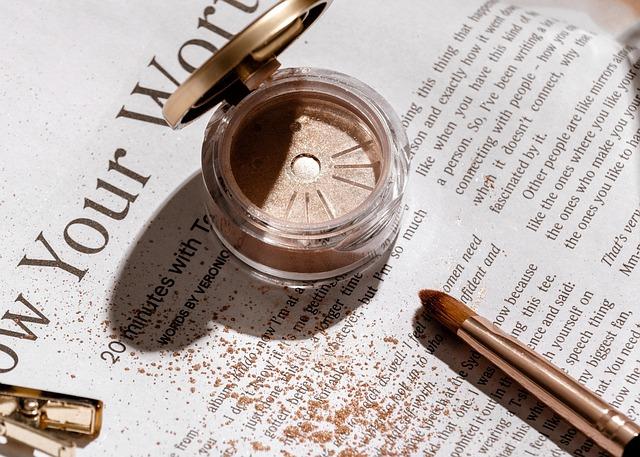The Debate Over Permanently Altering Facial Features
In a world where identity is both celebrated and scrutinized, the face becomes a canvas for self-expression, culture, and personal history. Yet, as technology advances and societal norms evolve, a new conversation emerges at the intersection of beauty, ethics, and individuality: the debate over permanently altering facial features. This discourse, rich with diverse perspectives, challenges us to consider the implications of changing the very essence of what makes us recognizable to the world. From the motivations behind such transformations to the long-term impacts on identity and society, this article delves into the multifaceted discussion surrounding the decision to reshape our most intimate reflection. Join us as we navigate the complexities of choice, perception, and the future of facial modification.
Exploring the Allure and Risks of Permanent Facial Modifications
In a world where self-expression and identity are increasingly celebrated, permanent facial modifications have emerged as a captivating yet contentious trend. These alterations, which range from intricate tattoos and piercings to more extensive procedures like implants and surgical transformations, are often seen as a bold statement of individuality. Proponents argue that such modifications allow for a profound connection between one’s inner self and outward appearance, offering a sense of empowerment and personal freedom. They view these changes as a form of art, a canvas upon which they can project their unique narratives.
However, the allure of transforming one’s visage permanently is not without its risks. Critics highlight several concerns:
- Health Risks: Infections, allergic reactions, and complications from surgical procedures can pose serious health challenges.
- Social Implications: Permanent changes might lead to stigmatization or judgment in certain social or professional circles.
- Psychological Impact: The permanence of these modifications can lead to regret, particularly if personal tastes or societal norms shift over time.
Balancing the desire for self-expression with the potential for unintended consequences requires careful consideration. As society continues to evolve, the conversation surrounding these transformations remains both complex and deeply personal.

Cultural Influences and the Pursuit of Ideal Beauty
The concept of beauty is deeply intertwined with cultural narratives and traditions that vary significantly across the globe. What one society deems beautiful can be vastly different from another, shaped by historical influences, media portrayals, and social norms. Cultural influences often dictate the pursuit of ideal beauty, urging individuals to adopt practices that align with their community’s aesthetic values. This pursuit sometimes leads to permanent alterations of facial features, driven by the desire to fit into a culturally constructed ideal.
- Media Representation: The portrayal of beauty in films, advertisements, and social media often sets a standard that many strive to emulate.
- Traditional Practices: In some cultures, specific facial features are celebrated and preserved through age-old beauty rituals.
- Globalization: As cultures intermingle, the cross-pollination of beauty ideals can lead to a blend of traditional and modern standards.
Despite the diverse influences, the global conversation about beauty is increasingly leaning towards acceptance and diversity. There is a growing recognition that beauty is not a monolith but a spectrum that celebrates individuality and cultural heritage. This evolving perspective challenges the notion of altering one’s appearance permanently, advocating instead for embracing natural beauty and redefining what it means to be beautiful in today’s interconnected world.

Balancing Personal Expression with Long-Term Implications
- Personal expression through cosmetic procedures can be a powerful form of identity exploration. In a world where appearances often play a significant role in personal and professional spheres, individuals may seek to align their external features with their internal sense of self. Whether it’s a desire to enhance certain attributes or to minimize insecurities, these changes are frequently seen as empowering choices that foster self-confidence and satisfaction.
- However, the decision to alter one’s facial features permanently also carries potential long-term implications that deserve careful consideration. As trends and personal tastes evolve, what feels like a perfect fit today might not resonate with one’s future self. Moreover, there are potential medical risks and psychological impacts to weigh, alongside societal perceptions and cultural norms that might shift over time. Balancing these factors involves a thoughtful assessment of both present desires and future ramifications, ensuring that the pursuit of personal expression does not overshadow the importance of long-term wellbeing.

Guidelines for Informed Decision-Making in Cosmetic Alterations
In the realm of cosmetic alterations, informed decision-making is paramount. This journey begins with a thorough understanding of the procedure, potential outcomes, and risks involved. Research is your most powerful tool—seek out reliable sources, engage with credible professionals, and explore patient testimonials to gather a comprehensive view. Consultations are not merely formalities; they are opportunities to ask questions, express concerns, and gauge the competency and approachability of your chosen practitioner.
- Understand the Risks: Every procedure comes with its set of risks and possible complications. Weigh these against the anticipated benefits.
- Consider the Long-Term Impact: Reflect on how the changes might affect your personal and professional life in the long run.
- Set Realistic Expectations: Have a clear, realistic vision of what the procedure can achieve. Discuss this openly with your surgeon to align expectations.
- Evaluate Emotional Readiness: Ensure that your desire for change stems from a healthy, self-driven motivation rather than external pressures.
By approaching cosmetic alterations with a balanced and well-informed mindset, you empower yourself to make decisions that align with your personal values and goals, ensuring a satisfactory and fulfilling experience.
In Conclusion
As we navigate the intricate tapestry of identity and self-expression, the debate over permanently altering facial features continues to evoke diverse perspectives. It is a conversation that transcends mere aesthetics, delving deep into the realms of personal choice, societal norms, and evolving definitions of beauty. While some view these changes as empowering acts of self-affirmation, others caution against the irreversible nature of such decisions. As technology advances and cultural paradigms shift, the dialogue remains ever-relevant, inviting us all to reflect on what it truly means to embrace one’s visage. Ultimately, the face we present to the world is a personal canvas, painted with the hues of individuality and the strokes of collective influence. As this debate unfolds, it encourages us to look beyond the surface and engage with the profound questions of identity, acceptance, and the art of becoming.


